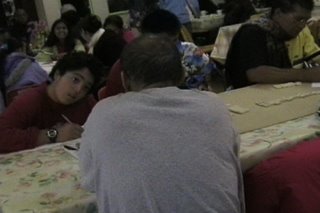
samantha and i are trying to be ready for our baby girl. recently, we have been learning about jewish and chinese customs for babies. we hope to both honor and update our cultural traditions. today, we are t + 1, and counting. : )
ani ma'amin"i believe" is a traditional letter or ethical will that parents write for their children. in contrast to a last will and trust,
ani ma'amin explains our central beliefs, ideals, and values. it may also include specific instructions or family stories to teach children about culture and tradition.
the ethical will is rooted in jewish tradition to teach jewish life to our children, from generation to generation. tradition also finds sources for ethical wills in isaac's blessing to jacob in gen.27. custom also roots the ethical will in moses' final commandments to the israelites in deut. 33-34. ethical wills peaked in jewish society during the middle ages, and my ethical will is based on the ethical will of judah ibn tibbon, a french jew in the 12th century.
upsherendeuteronomy 20:19 compares man to a tree. as a child grows, the sages explain, he or she develops the fruits of knowledge and good deeds. however,
orlah forbids the harvest of fruit until after a tree has passed its third year. custom also holds that children should only have their first hair cut at age
three.
other sources hold tradition from isaac luria, a mystical rabbi in tsfat during the 16th century. this custom explains that the family should weigh the child's hair after his or her first haircut and donate an equal amount to chairty.
bendel several jewish traditions were designed to protect the mother and child during the early days following birth. ancient societies often believed in superstitions about evil demons and spirits. for example, one tradition places candies and sweets underneath a baby pillow to attract evil spirits away from the baby.
many communities tie a garlic or red string to the baby pillow or to the bottom of the crib. the red string is left on until it wears out and falls off. samson raphael hirsch explains that the color red was required for cloth and fabric in the holy temple. the red dye was extracted from a species of worm. the color red should remind us to be humble, as even the low earthworm is holy.
brit batthe traditional ceremony for boys is called
brit millah, or covenant of circumcision. in genesis 16-17, god commands abraham to circumcise himself as a symbol of the covenant.
brit millah is held eight days after birth, even during shabbat or yom kippur.
the
brit bat is a parallel ceremony to introduce girls into the jewish covenant. there are several historical traditions that support the modern ceremony from germany, italy, holland, spain, and turkey. alternative customs hold a ceremony at the first torah reading or the first shabbat after birth (
zeved ha-bat), the eighth day, the fourteenth day (
las fadas), and the thirtieth day.







